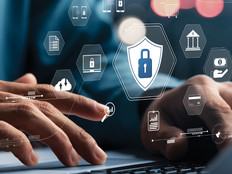The Top 3 Elements of Student Digital Citizenship
Now that we have technology in our classrooms, communities and homes, parents and educators are likely asking themselves, “How do we help children effectively use digital tools?”
As technology leaders, our goal should be to help our students become their best selves online. Digital citizenship is the answer.
The discussion surrounding digital citizenship has been growing, but not everyone can agree on its definition. Some see it as online safety, and others think it’s a way to address cyberbullying. Some people even define it as knowledge in a digital age. It is all of these things.
When we teach digital citizenship in schools, we are teaching students to be appropriate and use technology responsibly. Digital citizenship is not about replacing who we are in the real world but about expanding the possibilities of who we might become when we know and understand how to harness the power of our digital tools.
To start teaching digital citizenship, remember three simple maxims: Be safe, be savvy and be social. Here are some tips for getting a digital citizenship conversation started with K–12 students and how technology can be used to promote effective outcomes:
SIGN UP: Get more news from the EdTech newsletter in your inbox every two weeks!
Be Safe: Protect Yourself and Others
Almost everyone has found opportunities online that they enjoy on a regular basis, whether playing games or keeping up with friends and relatives. Students need to balance online hours with connecting to people in the real world. Digital devices are tools, and we decide when they are best used.
It’s exciting to learn, explore and create online but we also need to teach children that digital tools wield a significant amount of power and they should be wary and watchful for potential issues. When they encounter these issues online, such as a stranger trying to steal personally identifiable information, it is important for them to notify an adult.
Securing data is equally important. Social media, software and apps all have settings that can keep data protected. Of course, every digital citizenship program should begin with a secure network. Network management systems can directly support the program by granting rights to certain apps and sites. Web filters and firewalls provide another layer of protection and can be integrated into the network management system. IT leaders also should use secure browser settings, spam filters and anti-virus software.
Be Savvy: Educate Yourself and Others
In its broadest terms, literacy is the ability to read and write. But in digital communication, literacy takes on other forms. It’s important that students understand the nuances of each iteration. Hiller Spires, a professor of literacy and technology at North Carolina State University, notes that literacy is critical for all users, as it helps us find, consume, create and share content.
Digital tools, spread across a variety of platforms, provide new ways to communicate and share with those near and far. From email and social media to collaboration tools such as G Suite for Education and cloud storage, students today need a solid understanding of which solution is best for a given situation and also need to know how to use it effectively. Educators throughout school districts often rely on tools like Microsoft OneNote and Google Drive to create feedback loops with students and allow them to access their work wherever they are.
Digital literacy can also help us determine what is true versus what may not be accurate. While of course this is important when it comes to learning about and understanding world events, the ability to distinguish fallacy from fact is equally important in daily life.
For example, when making an online purchase, it is crucial for users to understand how to find what they want and then know how to protect themselves as they complete the transaction. And anyone involved with making purchases online needs to be aware that e-commerce is an evolving process — think bitcoin and blockchain. A good digital citizen spends and manages money responsibly, ISTE states in its “Citizenship in the Digital Age” infographic.
Be Social: Respect Yourself and Others
Thanks to improved access to digital technology, people who previously may have been left behind in a global learning experience are now able to participate. School districts should both applaud and embrace these opportunities, taking advantage of what technology offers challenged students, from those learning a second language to those with physical or behavioral disabilities.
Because of this expanding audience, it is important to practice and teach consideration of others. Where once this was hard to do digitally, teachers now can employ cutting-edge Cisco and EMC network communications equipment and other telepresence solutions to open the world up to the classroom. When we’re a global participant online, it’s easier to acknowledge others’ cultures, as we hope they will consider ours.
Treating others with respect and empathy are key elements of digital citizenship. Some states and countries now require that digital citizenship lessons be taught within schools and communities. Rules, policies and laws help to frame the direction of courses to help everyone be better online users.
Remember, the internet never forgets. It’s our job to teach today’s students how to manage their digital footprint. It is our responsibility to help all technology users become the best digital citizens they can be.
Learn how to set digital citizenship lessons according to grade level at edtechmag.com/k12/digitallessons.









